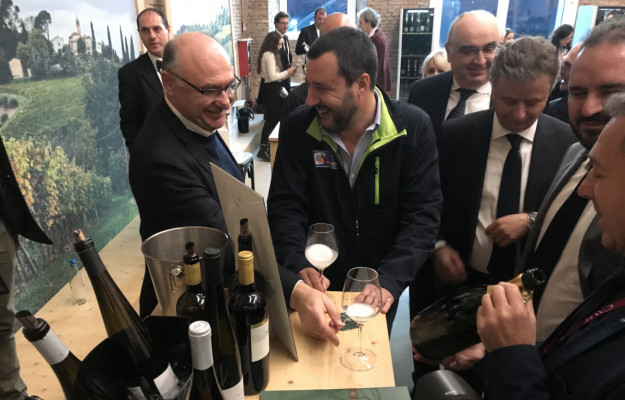The wine world and its markets change quickly, therefore, having a strong identity and special features to bet on are strong points in the long run, while in the short term you really need the ability to read trends and know how to adapt, which perhaps is something not yet within the reach of the Italian wine world.
These are the words as told to WineNews by Enrico Zanoni, one of Italian wine’s best-prepared managers, who is at the helm of CAVIT, a giant of Cooperatives in Trentino, boasting a turnover of over 190 million euros and exporting 80% of production. It is, therefore, a privileged observatory on the world market. “I do not want to be pessimistic about the world market”, commented Zanoni, “but we must pay close attention to dynamics that are accelerating. In the US, for instance, we are observing a steady growth in domestic production, and there are new areas like the States of Oregon and Washington that are becoming increasingly important. Millennials are growing and behaving differently from the consumers we have known up until today, and there are phenomena such as rosè or “red blend” wines, unthinkable a few years ago, but which, in a short time, have reached important dimensions. This means that we must be careful, we must certainly continue to affirm our identities, specificity and historicity, but we must also be able to grasp the new dynamics, and we are perhaps not as well equipped as American wine producers or other New World countries are”.
The US, which is the number one market in the world (and for Italy abroad) today, and China, are the world markets everyone has indicated as a reference for the near future. “Regarding China, I would say it is a market that has been painted too quickly and easily as an “Eldorado”, emphasized Zanoni, “who has passed through and is now going through various phases. Following the speculative bubble a few years ago, it is finally becoming a real consumer market, where those who buy wine are doing so to drink it and not just for giving. So, wine is becoming a consumer product, but a careful approach is needed here, too. This is because, beyond a hyper-niche of enthusiasts who know and appreciate our characteristics, I must say that at the moment basic consumption is polarized between the image of France as a producer of excellence, and New World, with countries such as Chile, New Zealand and Australia, which are favored by bilateral agreements and non-existent customs duties, and an offer focused on a few companies, while instead, we still have not been able to make our great complexity known. Perhaps the Chinese consumer is not yet ready for this, and, perhaps, here too we must adapt our export model to a different situation than our usual ones”.
As manager at the helm of a winemaking reference Cooperative, such as Trentino Cavit, a reflection on the evolution of quality and of the cooperative model on world markets is also a must. “The hyper fragmentation of properties and land has led to the need to join the cooperative world, which is the only way to give a sustainable income over time to winemakers who in many cases would be forced to abandon. Cooperatives”, said Zanoni “are a timely and precise response to a clear need, and in recent years have traveled through important path, working significantly on quality, rewarding members and binding them to quality results, including also product lines that have touched the peaks of productive excellence - we do this with Altemasi and Trentodoc, but also with more accessible products – refreshing the old image of Coooperatives which were linked simply to quantity production”.
Copyright © 2000/2025
Contatti: info@winenews.it
Seguici anche su Twitter: @WineNewsIt
Seguici anche su Facebook: @winenewsit
Questo articolo è tratto dall'archivio di WineNews - Tutti i diritti riservati - Copyright © 2000/2025









































































































































































































